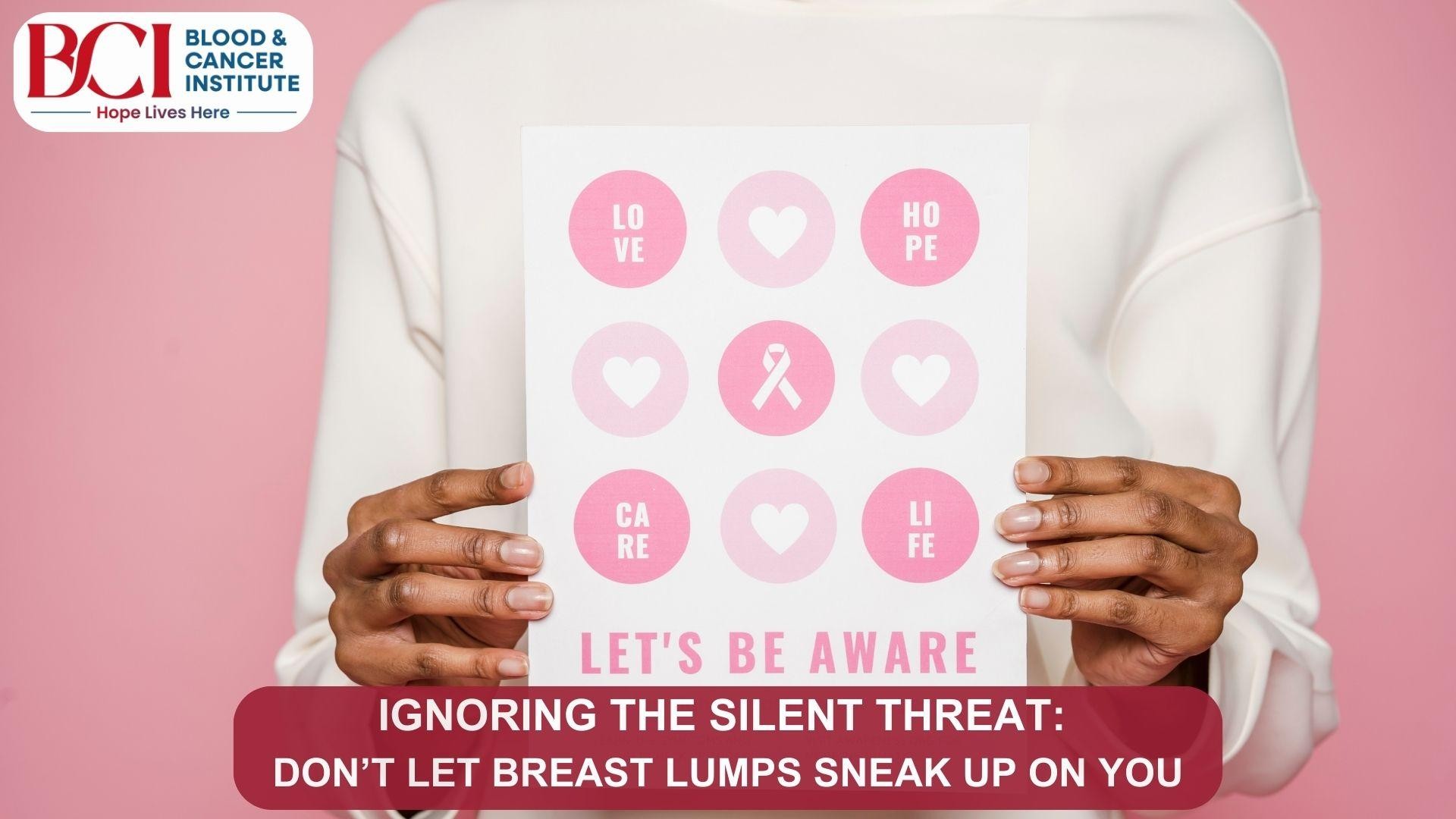
- By : BCI
- General
- Comments: 0
Ignoring the Silent Threat: Don’t Let Breast Lumps Sneak Up on You!
Breast health often takes a backseat in daily life, yet it is one of the most critical aspects of overall well-being, particularly for women. While many associate breast cancer with obvious symptoms, the reality is that it often starts as a silent threat — an unnoticed lump, a subtle change in texture, or a mild discomfort easily brushed off, explains our breast cancer specialists in Surat from BCI- Blood and Cancer Institute. Ignoring these signs can have serious consequences, making early detection and awareness essential.
Understanding Breast Lumps
One of the biggest misconceptions surrounding breast lumps is that every lump is an indicator of cancer. Not true; most breast lumps are benign and result from non-cancerous conditions such as cysts, fibroadenomas, or hormonal changes. However, the presence of a lump should never be ignored. The key lies in distinguishing between harmless and potentially dangerous lumps through self-examinations, medical consultations, and diagnostic tests under proper guidance from a cancer specialist in Surat.
Common Causes of Breast Lumps
Breast lumps can form due to several reasons, including:
- Fibrocystic Breast Changes — These are common in menstruating women and can cause lumps, tenderness, and swelling.
- Cysts — Fluid-filled sacs that can develop in breast tissue, often harmless but sometimes painful.
- Fibroadenomas — Benign, rubbery lumps that move easily under the skin.
- Infections or Inflammation — Mastitis or abscesses can create lumps accompanied by redness and warmth.
- Breast Cancer — The most serious cause, often presenting as a firm, painless lump with irregular edges.
While most lumps are non-cancerous, only a healthcare provider can determine their nature through proper screening methods like mammograms, ultrasounds, or biopsies.
The Silent Threat: Why Early Detection Matters
Breast cancer is one of the most commonly diagnosed cancers worldwide. According to the World Health Organization, it accounts for over 2 million new cases annually. The good news is that early detection dramatically increases survival rates. When caught in its early stages, the five-year survival rate for breast cancer is nearly 99%. However, once it spreads beyond the breast, treatment becomes more challenging.
Signs Beyond Lumps: What Else to Look For?
While a lump is often the most recognized symptom of breast cancer, other warning signs include:
● Changes in breast size or shape
● Persistent pain or discomfort
● Skin dimpling or puckering
● Nipple discharge (especially blood-tinged)
● Redness or scaliness on the nipple or breast skin
● Swollen lymph nodes in the armpit
Ignoring these subtle signs allows the disease to progress undetected, reducing the effectiveness of treatment.
Taking Control: Steps to Stay Ahead of the Threat
1. Perform Regular Self-Exams A monthly breast self-exam helps you become familiar with your normal breast tissue, making it easier to detect unusual changes. The best time to do this is a few days after your menstrual cycle ends, when breast tissue is less swollen.
2. Schedule Routine Mammograms Women aged 40 and above should get annual mammograms, or earlier if they have a family history of breast cancer. Mammograms can detect tumors that are too small to be felt manually.
3. Pay Attention to Your Body Any new lump, skin change, or persistent pain should be looked at by a breast cancer specialist in Surat. Delaying action due to fear or denial can have dire consequences.
4. Adopt a Healthy Lifestyle Maintaining a balanced diet, staying physically active, and limiting alcohol consumption can reduce breast cancer risk. Additionally, quitting smoking and managing stress contribute to overall breast health.
5. Know Your Family History If breast cancer runs in your family, you may have a higher risk. Genetic testing for BRCA1 and BRCA2 mutations can help assess your susceptibility and guide preventive measures.
Breaking the Silence: Awareness is Key
The stigma surrounding breast health discussions often prevents women from seeking timely medical advice. Fear of a cancer diagnosis, embarrassment, or lack of knowledge can lead to dangerous delays. Open conversations, educational initiatives, and community support can help normalize proactive breast health practices and has proven to be the best cancer treatment in Surat.
Final Thoughts: Don’t Let Fear Keep You Silent
Ignoring breast lumps and changes is not an option. While not every lump signals cancer, every lump deserves attention. Awareness, self-exams, and professional screenings are our strongest weapons in the fight against breast cancer. If you or someone you know notices any unusual breast changes, don’t wait — seek medical advice immediately from some of the best cancer hospitals in Surat.
Your health is worth prioritizing. Don’t let breast lumps sneak up on you — take control, stay informed, and be proactive.
